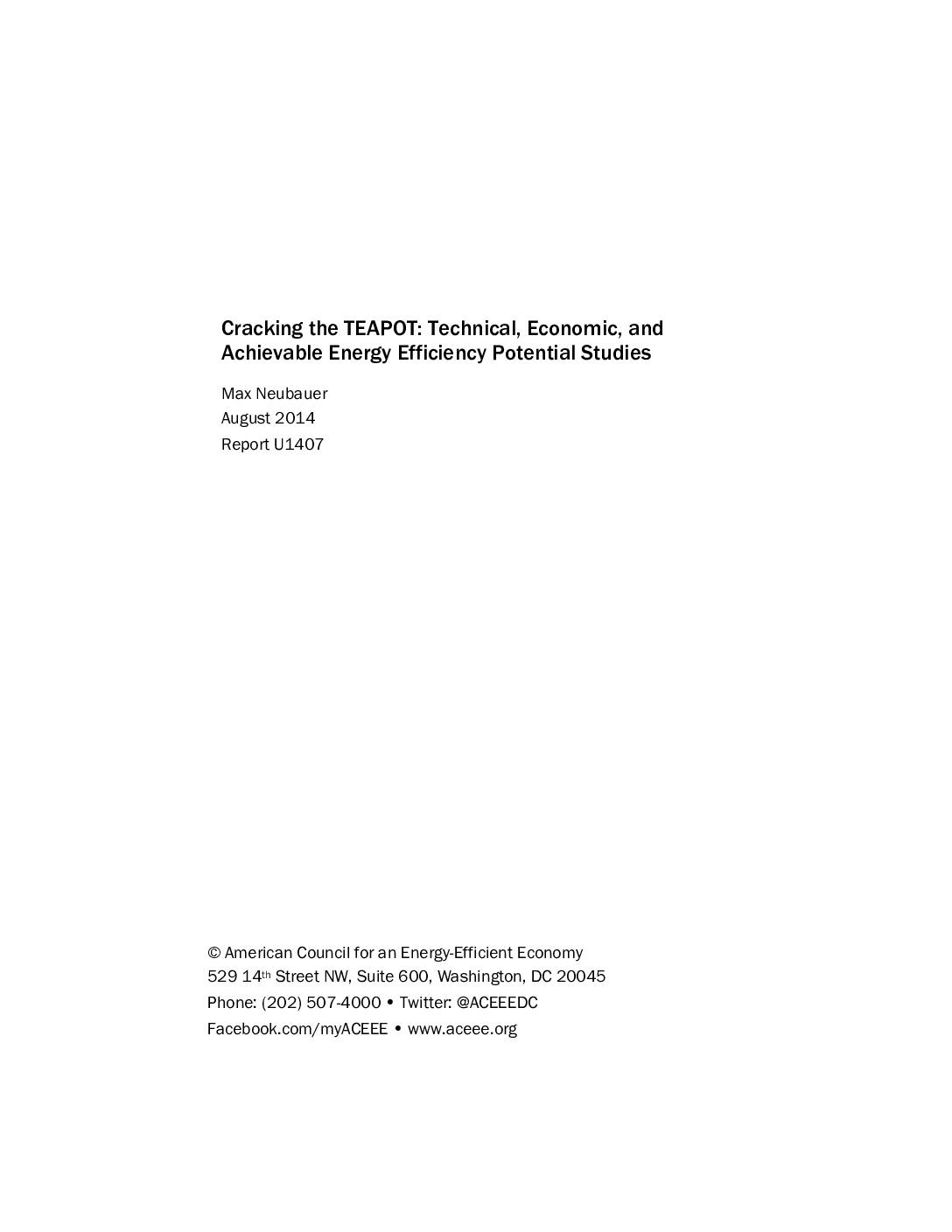In this report we focus on the development and role of energy efficiency potential studies. The primary objective of our report is to better understand the nuts and bolts of these studies and how their various methodological approaches and assumptions influence energy efficiency potential estimates. Our goal is to give stakeholders a clearer understanding of how endogenous and exogenous factors can affect energy efficiency potential and, ideally, to help them come to their own conclusions about the veracity and integrity of these studies. We reviewed and provide results for 45 publicly available studies published since 2009.
Based on our review, we discuss the various methodologies and assumptions typical of potential studies and how differences in these approaches can affect overall results. Overall we found that, for electricity, average annual maximum achievable savings range from 0.3% to 2.9% with a median of 1.3%. For natural gas, average annual maximum achievable savings range from 0.1% to 2.4% with a median of 0.9%. It is important to realize that the value of potential studies depends on the effort and resources that go into them, and the assumptions—whether reasonable or constrained—that underlie them. Many of these assumptions are often undisclosed or discussed, often for proprietary reasons. Lack of transparency about assumptions is a major issue for potential studies. These issues must be addressed so that potential studies are accessible to all stakeholders in order to facilitate more active, constructive discussions and more reflective assessments.
Share this

Sectors: Cross cutting, Power sector, Renewables
Country / Region: Northern America, United States
Tags: assumptions, corporate reporting, energy, energy efficiency, exogenous factor, international development, stakeholders, sustainable livelihoods approachesKnowledge Object: Publication / Report
Published by: ACEEE
Publishing year: 2014
Author: Max Neubauer
